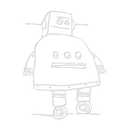Introduction: Creating Tool Handles by 3D Printing and Casting
As part of a personal project, I developed a method for creating custom tool handles for people with hand related medical issues. The process consists of creating a silicone casting mold with a rotatable and interchangeable end unit (for fitting different tool heads) using a "positive" printed on a simple open source 3D printer. The reusable silicone mold is then used to cast thermosetting plastic handles.
This process has many advantages over simply 3D printing the handles:
• The cast plastic (I used G-26) has significantly greater mechanical strength.
• The material is non-toxic.
• The material is resistant to high temperatures (dishwasher safe).
• FDM printed objects have internal cavities which can enable accumulation of filth and bacteria if used for cutlery handles, but cast handles are completely solid.
• Minimum 3D printer machine time - parts are printed only once.
Step 1: Creating the Molds
After designing the CAD model for the handle I created models for the 3D-printed molds (the yellow ones). the small third mold is for the rotatable insert which allows to fit different tools to the same handle mold. The molds include thin ridges that will become (in the RTV mold) air ducts for prevention of air bubbles in the finished product.
Once I printed (and post-processed) the molds I added the mold walls. The walls are not part of the print because the fact that they are removable makes the seperation of the RTV from the printed mold much easier. The next step is to spray it all with mold release and pour the RTV silicone (I used Mold Max 30) and let it cure. Notice that both sides of the RTV mold end up with positioning holes, the pins are separate pieces.
Step 2: Casting the Handles
Although not necessary for a good end result, I created a jig for the casting process for better repeatability.
I used G26 for the final casting because it cures quickly, doesn't stink while doing so and the end result is strong yet easy to rework.

Participated in the
Formlabs Contest








